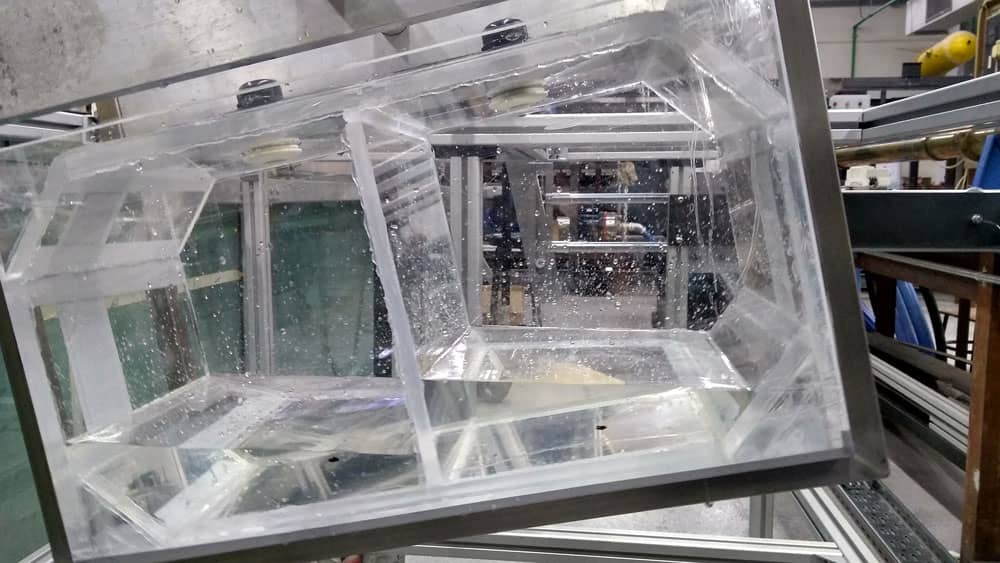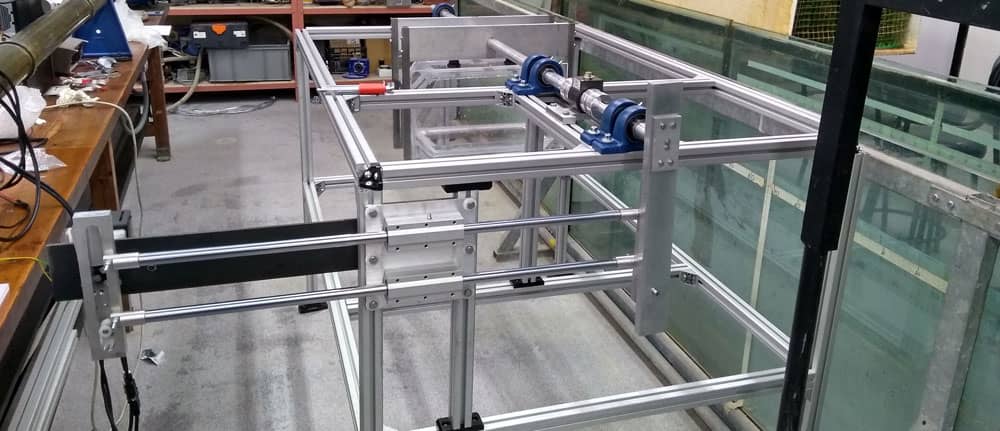Maritime transportation accounts for around 80% of the worldwide transportation of goods and plays a crucial role in sea borne global trade. It is the most economically efficient means for long-distance, inter-continental transportation, but it also boasts one of the lowest emissions per kilometre and unit transported.
Tanker vessels are vital for transporting liquids over large distances, carrying crude oil, fuel oil, liquified natural gas, and potentially liquid hydrogen, among many others.
Tankers are able to transport immense volumes of liquid in their cargo tanks. When subjected to external forces, like the oscillatory motion of the vessel at sea, these motions may give rise to sloshing waves inside the tank that can compromise the safety of the vessel.
Sloshing
Sloshing is the phenomenon that occurs whenever partially filled tanks are subjected to an oscillatory external force. Prof. Inġ. Claire De Marco and Dr Mitchell Borg (Faculty of Engineering, University of Malta) illustrates this: ‘Imagine you had a glass halfway full. If you move the glass back and forth and suddenly stop, the liquid will continue moving inside the glass even though the container is still.’
Inside tanker vessels, the motion of the sloshing liquid is accentuated, and the liquid is capable of causing a slamming effect which can damage the tank, the vessel, and in extreme cases, even capsize the vessel.
In order to avoid this risk, strict regulations regarding the volume of liquid cargo carried by tankers exist. In fact, Borg explains how tankers ‘are not deemed seaworthy if the volume of the liquid cargo within their tanks is more than 10% and less than 70% of the tank’s volume, meaning that the vessel can’t even leave port’. This regulation creates great logistical difficulties. Borg illustrates that ‘if a tanker is coming from the Strait of Gibraltar and offloads cargo in Ibiza or in Sicily or in Malta and needs to sail to the Greek islands, for example, the cargo volume would have to stay below 10% or above 70% volume.’ This makes transportation much less efficient, especially when it involves spot-trading (a one-off rate for cargo, typically only valid for one shipment) and offloading in multiple ports. The 10-70% regulation causes logistical problems and will inevitably require more frequent trips, which in turn makes the transportation inefficient.
Breaking the wave
Funded through a Maritime Seed Award MarSA, a research group from the University of Malta, DeSloSH, is aiming to Decrease the Sloshing effect on Ship Hulls. In order to accomplish this, Dr Mitchell Borg and Prof. Inġ. Claire De Marco (Faculty of Engineering, University of Malta) are building a testing rig that will analyse how the sloshing phenomena and its effects transpire in different tank designs and how internal structures can be designed and installed within the tanks to suppress the dynamic effects of sloshing.

The sloshing problem is not limited to maritime transportation, but is also crucial for the aviation industry. Airplanes have to carry fuel in their wings, which also results in sloshing. Studying this effect is also a major contribution for the aviation industry, and several aviation-related projects are underway to analyse and suppress the sloshing effect in a controlled environment.
However, the types of external forces subject on an airplane are quite different from the forces a vessel experiences at sea. This means that there are fundamental differences in the way that the DeSloSH testing rig has been designed. While existent designs use pistons to induce an external force on a tank in the lab, DeSloSH designed the experimental set-up so that it could induce a torque to replicate motions experienced by vessels in the sea.
When a cargo ship or any other type of vessel is in operation at sea, it oscillates upon its axis, similar to an inverted pendulum. In physics, this type of motion is known as simple harmonic motion. In DeSloSH’s setup, a stepper motor converts electrical energy into rotational motion which is then transformed into simple harmonic motion by a scotch yoke. The scotch yoke simulates the external forces on a partially filled, downscaled tank to induce the sloshing effect. A torque sensor will measure the resulting torque on the tank. The torque relates how a force can affect the rotational motion of a body, and by measuring it, the strength of the sloshing effect can be understood.
After realising how the tank behaves, different internal structures will be added to the tank. For example, adding direct partitions like walls along the rotational axis will decrease the sloshing effect, but the project’s new concept is to apply purposely arranged and sized perforated partitions so that the holes break the wave with much greater efficiency.
The impact in the transportation sector
The team explains how, ‘we are starting from scratch, from conceptualization to design, purchasing the raw material, fabrication and assembly of the new design, and testing…’. The use of computational fluid dynamics (CFD) and numerical software to simulate this phenomenon, allied with the experimentation in the testing rig, makes it easier, cheaper, and more reliable to simulate different conditions. For instance, one can test if the software agrees with experimentation and then simulate upscaling to full sized tanks, and crucially this method allows researchers to predict the behaviour of different types of liquids and volumes within the tanks instead of physically testing the model.
DeSloSH aims to design new tank architectures and predict, through simulations, that carrying liquid volumes within the prohibited 10-70% interval is safe. This would solve many logistical problems, reducing unnecessary journeys and making the process of transportation safer, cheaper, and more effective. Above all it would lower the emissions of the sector, making it more ecological.
The DeSloSH project is supported through the Maritime Seed Award 2020.





Comments are closed for this article!